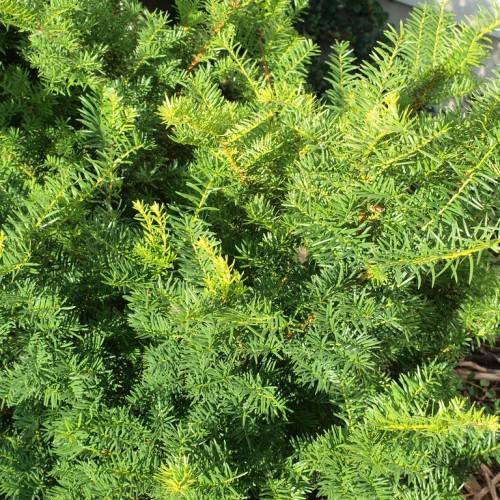
yew
Taxus media 'Wellesleyana'
Cycle:
Perennial
Watering:
Average
Hardiness Zone:
5 - 7
Flowers:
Flowers
Sun:
Full sun,part shade
Leaf:
Yes
Growth Rate:
Low
Maintenance:
Low
Poisonous To Humans:
Yes
Poisonous To Pets:
Yes
Salt Tolerant:
Yes
Thorny:
Yes
Care Level:
Medium
watering
Yew (Taxus media 'Wellesleyana') should be watered deeply weekly. Water should be applied slowly so that the soil is thoroughly moistened. To check if the soil is sufficiently moist, use your finger to dig beneath the surface. If the soil is dry, continue to slowly water the plant until the entire root area is saturated. In addition to weekly deep watering, Yew should be misted lightly on its leaves every day if humidity levels in your home are low. During the warmer months, water should be increased, but should not reach the point where the soil is soggy. In colder months, Yews should be watered less frequently but to the same depth. Container grown plants may require more frequent watering due to the lack of insulation from the cold.
sunlight
Yew (Taxus media 'Wellesleyana') plants need full to partial sunlight depending on the season. In the summer months, yews should receive at least 4 to 6 hours of sunlight for optimum growth. In the winter months, yews should receive at least 2 to 3 hours of sunlight each day. Yews are typically shade-tolerant plants, so they do not need a lot of sunlight in order to survive.
pruning
Pruning for yews (Taxus media 'Wellesleyana') should take place in late winter or early spring when the plants are still dormant. Pruning should be done sparingly, with most of the foliage simply thinned out, rather than removing the older branches at the base. Remove dead, weak or broken branches first, and then open up the center of the plant to allow for better air circulation. Trim off crossing or rubbing branches, as well as any branches that are growing downward or inward. Pruning should reduce the size of the plant without removing too much foliage, as overpruning will cause the yew to suffer stress and die back.
